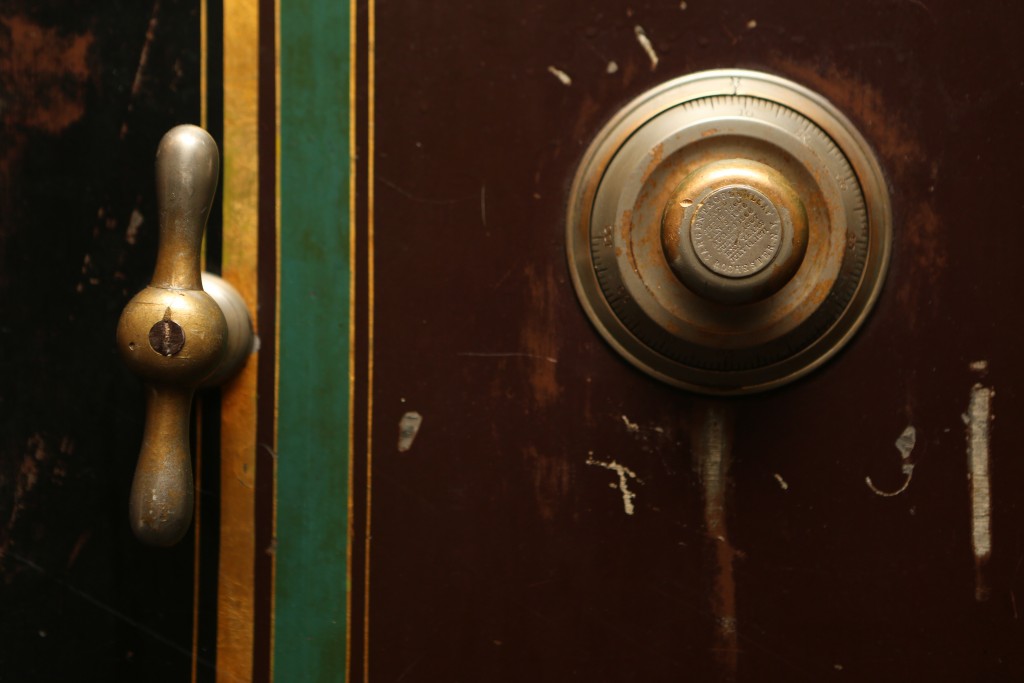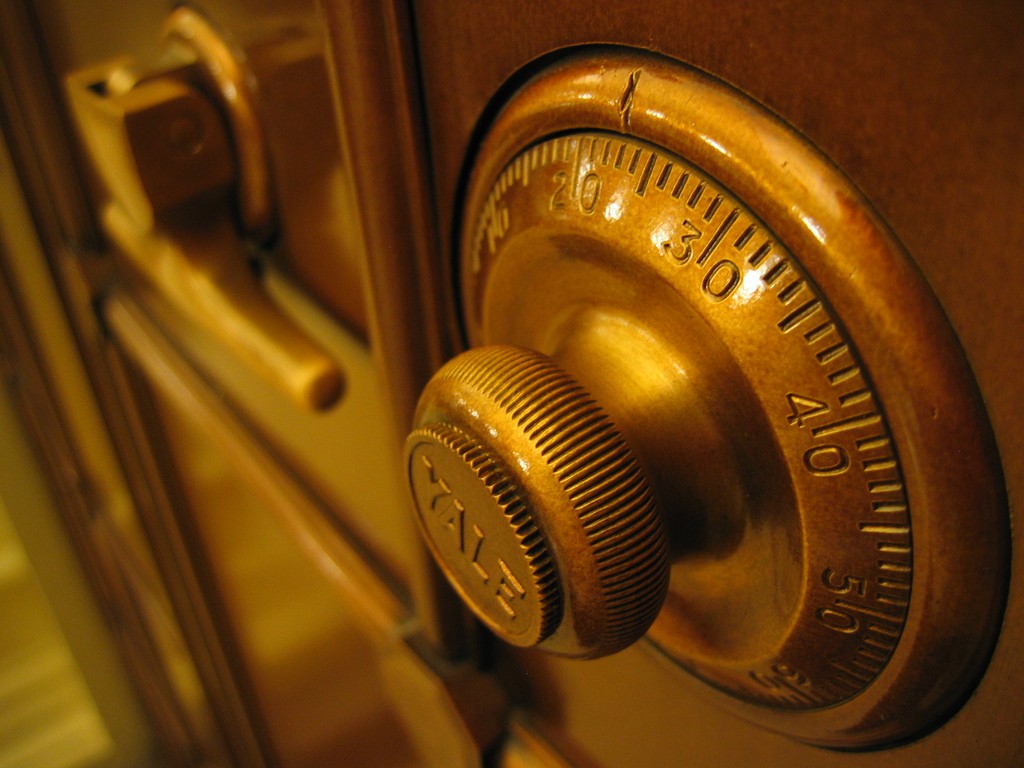I have always maintained that the decline of British safe making was caused by it becoming a victim of its own success. Commercial rivalry between the three leading protagonists; Chubb, John Tann and SLS had led to a creative hot-house were they all strived to develop the new locking systems and security barriers that would give them the competitive edge over their rivals.
Chubb invented the isolator bolt-work system in which the action of locking the safe completely disconnected any link to the bolt-work. Once the safe was locked the handle spun freely, so no tension, pressure or force could be applied to the locking mechanism. They also pioneered ‘bell casting’ where four sides and the back of the safe were cast in moulds flooded with molten aluminium mixed with oxide nuggets – so called TDR (torch and drill resistant) alloy. With a bell cast safe there were no seams of joints to be exploited – all five sides were homogenous.
CLEVER CONCRETE BARRIERS
Meanwhile, John Tann was working hard to produce new ‘super concrete’ barriers. By combining chilled iron shot with concrete and adding special plasticisers, the patent Adamantium concrete could be poured into the body of the safe in an ultra-fluid state, allowing the mix to reach every nook and cranny. SLS was also experimenting with special inclusions to mix with their aggregates, including carbon fibres and metal needles. They developed revolutionary ceramic pegs placed over vital areas to protect against drilling.
After the war, many servicemen returning to civilian life faced unemployment and disillusionment. Many had been trained in the art of sabotage and were skilled in the use of explosives. This had led to a nationwide rise in the number explosive attacks on safes which continued well into the 1970s.
Safe makers responded by the devising simple anti-explosive re-lockers. They were small spring-loaded bolts retained by stainless steel wires trapped and retained by the lock mounting. When the lock was blown away, the wires were released, allowing the bolts so shoot and engage in the bolt-work, jamming it so it could not be withdrawn. Placing a glass plate in front of the lock, however, significantly improved their efficiency. The re-lockers were now anchored to the glass, which would shatter in an explosion allowing all the bolts to engage. But glass would also shatter if touched by the heat of an oxyacetylene torch or the tip of a drill bit. The percussive shock of a hammer would also be sufficient to shatter this glass shield.
As these innovations were introduced, so the number of successful attacks on high security safes slowly dwindled. Insurers began to extend indemnity levels. Where they once insured the contents of a safe for £10,000, they were now happy to extend it to £15,000 or more. Sales of safes began to fall. Profits declined and share prices fell. The major manufacturers were in trouble with SLS being the first to fold. Chubb and Tann struggled on but the introduction of Europeans standards for testing and rating safes sounded their death knell.
Where the battle had once been to produce the most technically advanced safe, now the rush was on to produce the cheapest safe to get through the test. By discarding any technical elements that were not directly relevant to passing the test, costs could be reduced. The likes of Chubb and Tann were rapidly outclassed by foreign competitors who faced lower labour rates and could buy cheaper steel. Soon, both Chubb and John Tann had been gobbled up by Gunnebo, the Swedish conglomerate; likewise, Churchill, Rosengrens and Fichet Bauche. The vacuum at the lower end of the market was quickly filled by cheap imports from Eastern Europe. Inevitably, the quality of safes being sold in the UK declined alarmingly. But bizarrely, the number of raids on safes continued to remain low.
It seemed that the old-fashioned safe cracker was either imprisoned, retired or had taken to robbery with violence. In spite of the fact that today’s safes are unarguably far less secure than they used to be in the heyday of British safe making, insurers remain complacent and end users, not realising that they are getting far less bang for their buck, are content to buy cheap, poor quality safes over the internet.
ANOTHER PREDICTION…

Image courtesy of https://guardiansafeandvault.com/
Having accurately predicted that European standards would ruin the British safe industry, I now make another prediction. Sometime in the future, maybe quite soon, the pendulum is going to swing the other way and when it does, insurers are going to be caught with their trousers down. Since standards for testing and rating safes were drafted, a whole bunch of new and more efficient attack tools have been developed. Many of them are expensive and currently beyond the reach of the average villain, but some are very cheap and highly cost-effective.
We have also seen the introduction of lightweight, cordless grinders. At first they were not powerful enough to cause problems but now the latest models are greatly improved and used in conjunction with ultra-thin titanium-coated disks, can cut through lower grade safes with consummate ease. Any safe cabinet tested in accordance with EN14450 and rated S1 or S2 would be vulnerable, as would most sub-Grade 0 safes. Grade 0 and most Grade I safes would also be likely targets – perhaps even some Grade II.
At the moment there seems to be a sort of hiatus while we wait for the criminals to play catch-up and discover the bounty that awaits them. Meanwhile, working groups formed by various bodies including Eurosafe and Eurosafe UK are debating how they should revise EN14450 and EN1143-1/2 to incorporate some of these new tools into their standard test procedures. At best, it is going to take a few years to bring these revisions into force. So the big question is, “Will criminals cotton on before the revised standards are introduced and manufacturers start to improve the quality of their safes?”
Mike Palmer FSyI has been involved in the safe industry for more than four decades, in 1995 receiving the accolade of the ABIS Award for “outstanding achievement in security and crime prevention”.
You can email him at: info@mikepalmerconsultancy.co.uk

